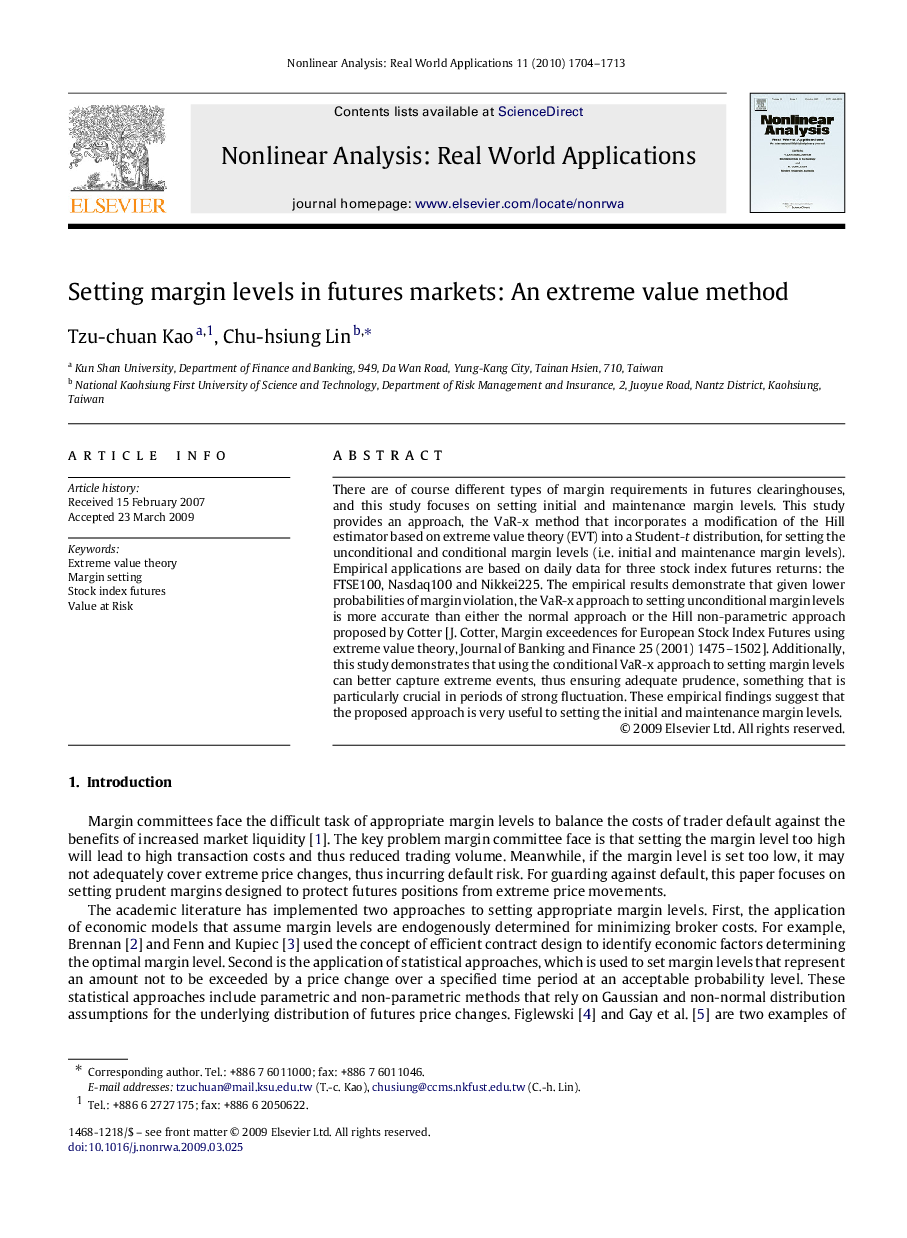| Article ID | Journal | Published Year | Pages | File Type |
|---|---|---|---|---|
| 838619 | Nonlinear Analysis: Real World Applications | 2010 | 10 Pages |
There are of course different types of margin requirements in futures clearinghouses, and this study focuses on setting initial and maintenance margin levels. This study provides an approach, the VaR-x method that incorporates a modification of the Hill estimator based on extreme value theory (EVT) into a Student-tt distribution, for setting the unconditional and conditional margin levels (i.e. initial and maintenance margin levels). Empirical applications are based on daily data for three stock index futures returns: the FTSE100, Nasdaq100 and Nikkei225. The empirical results demonstrate that given lower probabilities of margin violation, the VaR-x approach to setting unconditional margin levels is more accurate than either the normal approach or the Hill non-parametric approach proposed by Cotter [J. Cotter, Margin exceedences for European Stock Index Futures using extreme value theory, Journal of Banking and Finance 25 (2001) 1475–1502]. Additionally, this study demonstrates that using the conditional VaR-x approach to setting margin levels can better capture extreme events, thus ensuring adequate prudence, something that is particularly crucial in periods of strong fluctuation. These empirical findings suggest that the proposed approach is very useful to setting the initial and maintenance margin levels.
